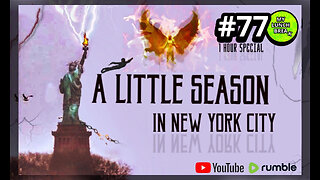Where Do Your Aquarium Fish Come From
Learn about where Aquarium Fish come from, and if it's sustainable.
Support me on Patreon: https://www.patreon.com/TankTested
Follow Tank Tested: https://www.instagram.com/tanktested
www.twitter.com/alexwenchel
Visit my website: https://www.tanktested.org/
LEARN MORE ABOUT MY FISHING FOR CARDINALS FILM:
www.fishingforcardinals.com
Learn more about Project Piaba:
https://projectpiaba.org/
Follow my friend Chelsea Greene's incredible film, One Forest:
https://www.facebook.com/oneforest.world
The Rio Negro in Brazil, one of largest tributaries in the world.
It pumps a million cubic feet of water into the Amazon River every second. During each wet season, the water rise, flooding the forest floor. In these flooded forests, live million upon millions of tiny tropical fish. Many of which are common in home aquariums around the world. Chief amongst them is the Cardinal Tetra, a tiny iridescent fish whose population explodes during the wet season.
Today, we’re following Maracéli and her daughter Josellem, a pair of piabaros, or local fishers, as they collect Cardinal Tetras for the aquarium trade. In this flooded forest, there are likely millions of Cardinals—but that doesn’t mean catching them is easy.
These waterways may look inviting, but the river is filled with branches, roots, and stumps that would snag a large cast or seine net. Here, the only way to catch small fish is by hand.
That’s where Maracéli’s hapishay comes into play. This long net can be operated with just one hand, leaving her second-hand free so she can use a paddle to herd the fish.
With each dip, Maracéli captures a few dozen fish which she collects with a bowl.
Tossing the fish in a waiting basket may seem unsympathetic. But this technique minimizes the average time fish are exposed to air, dramatically increasing their long-term survival.
These fish will end up in home aquariums.
But many more fish will continue their lives in the waters below. Years of studying these collection sites haven’t shown a measurable impact on the ecosystem—so it appears that hand-catching fish is sustainable in these waterways.
This is Darequah, a small fishing village on the rio negro. They don’t depend on logging, mining or farming, all of which can threaten the rainforest. They rely on fishing. The cardinals that piaberos like Maracéli catch are stored here, in holding pens. These fish will be sold for a few pennies a piece, so Darequah tries to collect as many as they can before they are transferred to a motorboat and sold to exporters in the capital city of Manaus.
This is the story of the people who live and work on the rio negro. It’s the story of a vast and beautiful rainforest under threat from the outside world. And it’s the story of a tiny fish that’s surprisingly important.
-
 8:29
8:29
ParisDemers
18 hours agoThe Kratos/God Of War Workout Program (His Real-Life Training)
1021 -
 16:14
16:14
CarlCrusher
13 hours agoSkinwalker's Evil Twin - Beyond Skinwalker Ranch Behind the Scenes Season 1 ep 2
211 -
 58:35
58:35
Crime Circus
19 hours agoMackenzie Shirilla KlDNAPPED!! True Crime Documentary!
2671 -
 12:00
12:00
DepressedGinger
10 hours agoLibs *MELTDOWN* as Biden sh*ts himself again...
1903 -
 8:03
8:03
Bearing
16 hours agoE-Safety Karen INVENTS Elon Musk HARASSMENT While LEAKING Private Details!
10.5K71 -
 17:16
17:16
Clownfish TV
21 hours agoMedia Melting Down Over Mainstream Media Meltdown...
28.7K56 -
 1:11
1:11
Gamazda
14 hours agoFlight of the Bumblebee - Rimsky-Korsakov
32K42 -
 1:00:21
1:00:21
MYLUNCHBREAK CHANNEL PAGE
14 hours agoA Little Season in New York City
39.1K78 -
 11:56
11:56
China Uncensored
16 hours agoThe Philippines Threaten War with China
41.8K28 -
 33:00
33:00
Degenerate Jay
20 hours agoThe James Bond Games Have Been Lost To Time
21.4K11